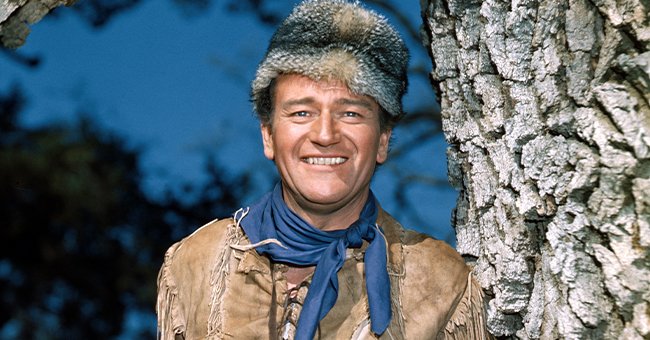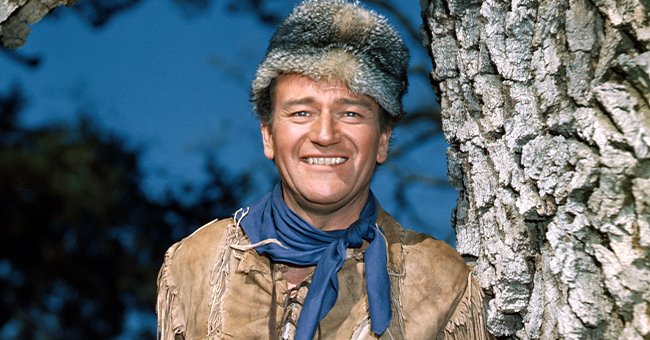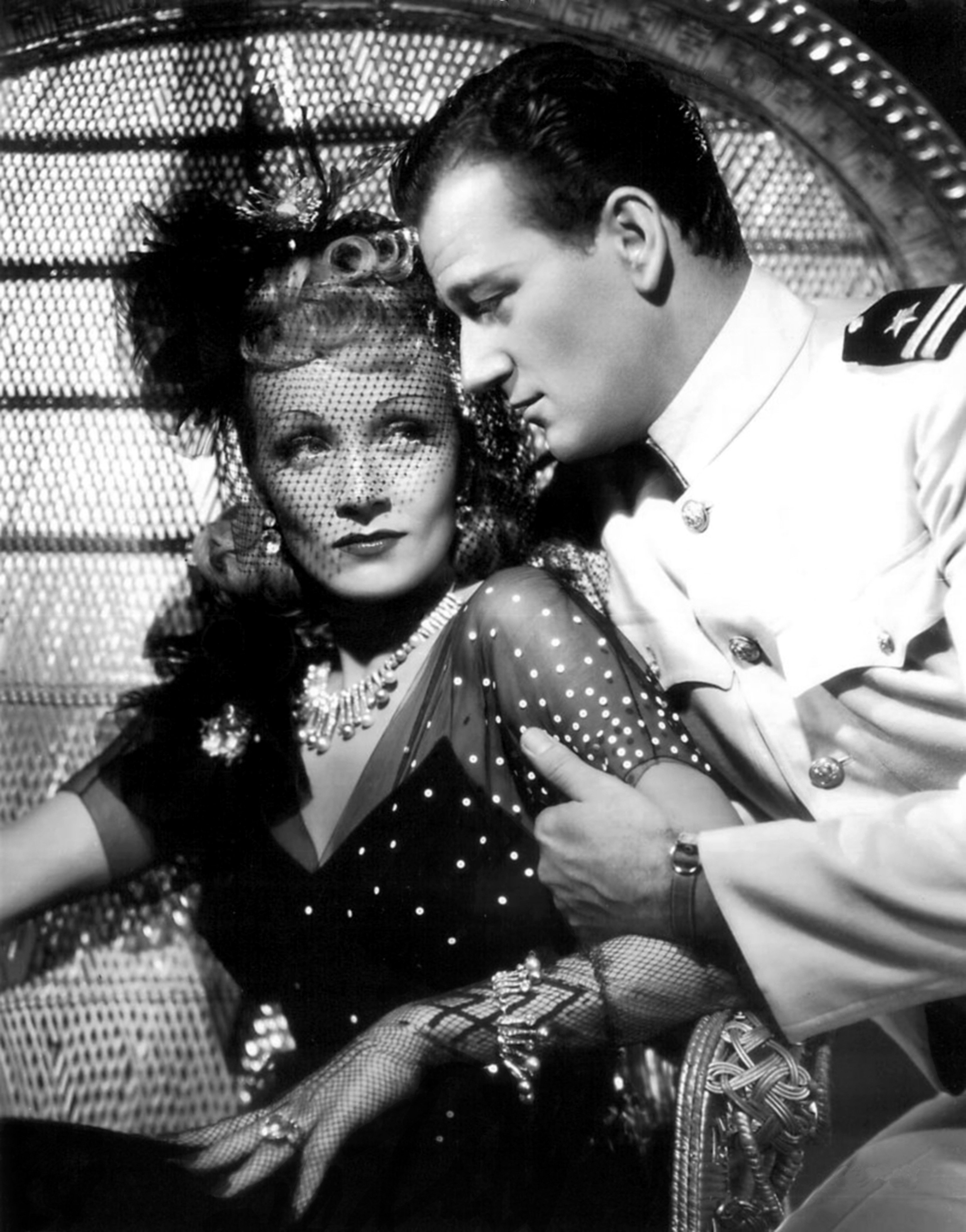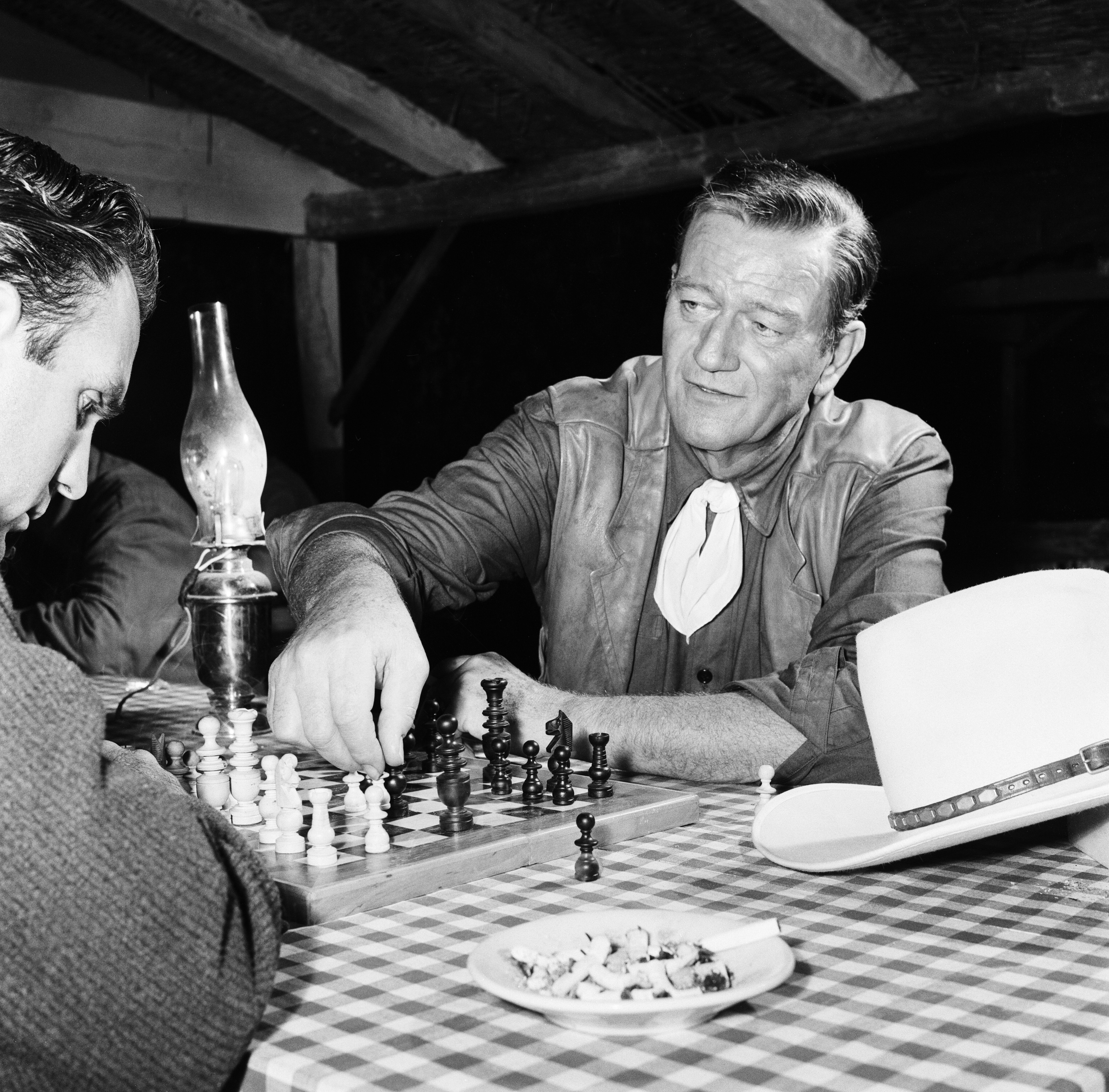
A Look at Late Westerns Star John Wayne’s Life and Career
John Wayne is one of the most famous names and faces in Hollywood, not only for his long and stellar career but also for the legacy he has left behind upon his passing.
He was born Marion Robert Morrison, although some sources list him as Marion Michael Morrison and Marion Mitchell Morrison, in Winterset, Iowa in 1907.
He was the oldest of two children brought into the world by Mary "Molly" Morrison and Clyde Morrison, and moved to Lancaster, California, with his family when he was around 7 years old.

John Wayne on the set of George Waggner's "The Fighting Kentuckian" | Photo: Sunset Boulevard/Corbis via Getty Images
AN EXCELLENT STUDENT AND SURFER
Eventually, he settled down in Glendale, California, where he started to become a star in high school, excelling in both the classroom as well as football and several theatrical productions.
When he was young, Wayne was quite a fan of surfing, an activity that he loved so much that he could always be found at the nearest beach surfing until the sun was almost gone.
Unfortunately, he was forced to stop surfing after dislocating his shoulder, an injury that also cost him a spot on the school's football team, but thankfully not his scholarship.
After winning a football scholarship, the late star attended the University of Southern California in the fall of 1925, having joined the Sigma Chi fraternity in the process.
HE DROPPED OUT OF SCHOOL
His football career didn't last long and after two years of playing, he suffered yet another serious injury on the field, which tragically put an end to his scholarship.
Wayne dropped out of school shortly after but managed to land a job handling props at Fox Studios, where his skills and talent in front of the cameras started getting noticed.
While in college, Wayne worked as an extra in "Brown of Harvard" and "Drop Kick," in 1926 and 1927 respectively, but everything changed after meeting director John Ford.
Ford noticed Wayne on the set of "Mother Machree," in which he was an extra, and was given his first leading role in the 1930's film "The Big Trail" by director Raoul Walsh.
HOW HE ENDED UP WITH HIS NAME
It is believed that Walsh, who also directed "Desperate Journey" and "Uncertain Glory, was the one who helped Wayne come up with his legendary screen name.
Sadly, the movie was not a success, far from it, and the young actor bounced between small projects for the next 10 years. He did, however, start to develop the action side of his persona.
His next big break came in 1939 when was offered the role of Ringo Kid, an outlaw that becomes a part of a group of characters on a journey through frontier lands.
The film was well-received by audiences and critics and ended up earning a total of 7 Academy Awards nominations. However, only 2 of those awards were won, for Best Music and Best Actor in a Supporting Role.
A VERSATILE ACTOR
Already making a name for himself, Wayne played a Swedish sailor in Eugene O'Neill's "The Long Voyage Home," which was also nominated for a handful of Academy Awards.
This was around the same time Wayne got romantically involved with Marlene Dietrich, the famous German actress and sex symbol. They also starred together in films such as "Seven Sinners" and "Pittsburgh."

John Wayne and Marlene Dietrich in a scene from the movie "Seven Sinners" | Photo; Donaldson Collection/Getty Images
During this period Wayne was married to Josephine Wayne, and while there were rumors that the actor had flings with other women, nothing was as substantial as his relationship with Dietrich.
Wayne, who passed away in 1979 from stomach cancer, had the opportunity to work behind the cameras in the late 40s, having produced "Angel and the Badman" in 1947.
Although he was nominated for an Academy Award on 2 occasions, first for Best Actor in "Sands of Iwo Jima" and then for Best Picture in "The Alamo," he only managed to win an Oscar in 1970 for his role in "The Grit."
He was advised by doctors to hide the fact that he had cancer.
HE LOVED CHESS
One of the most curious facts about Wayne was his love for chess, as he was known for being an avid player and even bringing a small chess board with him on set so he could play between scenes.
Wayne was a particularly good chess player, and he would often play against fans while attending his third wife Pilar Pallete's amateur tennis tournaments.
Aside from fans, the actor would also go face-to-face with other stars who enjoyed playing the game, such as Jimmy Grant, Robert Mitchum, Rock Hudson and Dietrich.

John Wayne on the set of the film "Circus World" at the Bronston Film Studios enjoying a game of chess between shots in 1963 in Madrid, Spain | Photo: Arthur Sidey/Mirrorpix/Mirrorpix via Getty Images
"THE BIG C"
As aforementioned, the late 72-year-old died from stomach cancer, and in his last movie, "The Shootist," he portrayed John Bernard Books, a man with cancer who found himself involved in one final gunfight.
Nowadays it is quite common for someone to refer to cancer as "the big C," but Wayne was the one who actually coined the term in order to make it sound less scary.
In the 1960s, Wayne had to undergo an operation to remove a rib and half of one lung and was advised by doctors to hide the fact that he had cancer. During a press conference, he said:
"They told me to withhold my cancer operation from the public because it would hurt my image. Isn’t there a good image in John Wayne beating cancer? Sure, I licked the Big C.”
According to his daughter, Aissa, the 1964 press conference was the only time she heard the famous actor actually say the word "cancer," even when he developed it for the second time.
Wayne was survived by his children - Antonia, Melinda, Michael, Patrick, Aissa, Ethan and Marisa, and while he may be gone, his immense contribution to the film industry will never be forgotten.
